Gentiva/Kindred Hospice Orientation
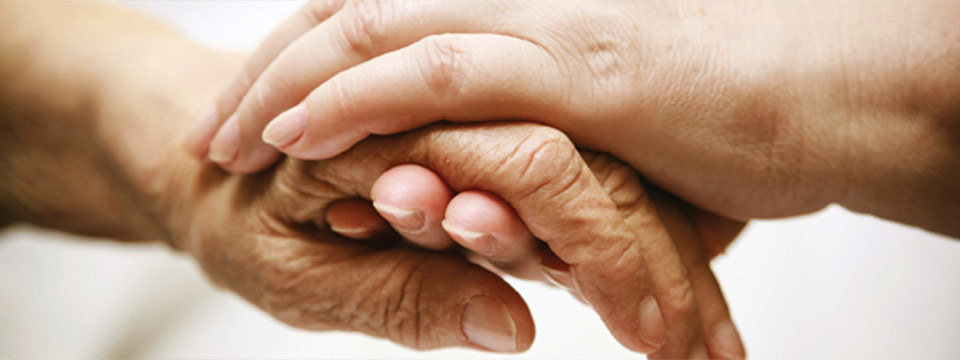
Introduction to Hospice
"The History & Philosophy Behind Hospice Care"

Purpose?
"Hospice affirms the concept of palliative care as an intensive program that enhances comfort and promotes the quality of life for individuals and their families when cure is no longer possible
... a peaceful and comfortable death is an essentials goal of health care."

History of Hospice
- 1986 -Congress makes the Medicare Hospice benefit permanent. States are given the option of including hospice in their Medicaid program. Available to terminally ill nursing home residents.
- 1974 - Florence Wald, along with two pediatricians and a chaplain, founded "Connecticut Hospice" in Bradford Connecticut.
- 1994 - The Health Care Finance Administration (HCFA) sends a memorandum alerting the regions of problems regarding questionable certifications and re-certifications of terminal illnesses and thus, improving documentation amd certification procedures.
Our Philosophy?
Hospice provides support and care for persons in the last phases of an incurable disease so that they may live as fully and as comfortablely as possible ...
[hospice] recognizes dying is part of living and hastens, nor postpones death.

FAQ?
What is Hopsice?
[hospice] End of life care, emphasizes pain management and symptom control...the center of hospice are the beliefs that each of us has the right to die pain-free, with dignity .
Who can receive hospice care?
Hospice care is appropriate if your doctor and the hospice medical director certify that you have a terminal illness..if the disease runs it's course, death can be expected in six months or less.
Where does hospice care take place?
Majority in their homes, or home of a loved one [whereever it's needed]
FAQ? (continued.)
Is hospice a place where a patient foes when "nothing else can be done"?
No. Hospice is "something more" that's based on comfort-oriented care.
When is it time for hospice?
It is never too late to seek hospice care.
How is Hospice paid for?
Medicare, Medicaid and private health insurances for those eligible.
FAQ? (continued.)
How does hospice care work?
The patient is an active participant in identifying their goals of care..Members of our hospice staff make regular visits to assess the patient and provide care 24/7.
- Physician services
- Regular visits by nurses
- Hospice aide to assist with personal needs
- Spiritual care for patient and family
- Bereavement counseling
- Volunteer support
What kinds of services are provided by hospice?
FAQ? (continued.)
Is the family and caregiver part of the Plan of Care?
In Hospice, the patient, family and caregivers are considered the "Unit of Care".
This may even include family members.
Overview: Volunteer Services
"The roles of the patient and administrative volunteer"

Overview
Hospice philosophy and service depend on both professional and volunteer services to fulfill organizational, patient, caregiver, and family member needs.
Administrative Volunteer
- Assisting with compiling and sending monthly bereavement letters.
- Entering data specific to volunteer programming
- Scanning documents into kindred link
- Answering the office phone
- Organizing memorial service or helping
- childrens' bereavement camp
Patient Volunteer
- Helping a patient with light household work (laundry, taking out the trash, dish-washing, etc) or meal-prep.
- Reading or playing cards
- Visiting to provide companionship
- Visiting with certified therapy animal
- Providing bereavement care for patient family.


Competency Evaluation
- The volunteer’s performance and competency is assessed throughout the orientation process during observations and through administration of a quiz upon completion of training.
- Additionally, performance and competency is assessed on an ongoing basis
Dress Code "Do's"
- Khakis
- Jeans
- Button ups
- Sweater
- Polo shirts
- Capri pants
- Short sleeve tops

Dress Code "Dont's"
- Open-toed shoes in a patient support role
- Flip flops
- House shoes
- Slippers
- Torn faded clothing
- Jogging suits
- Pajamas
- Low cut clothing
- Items with offensive logos
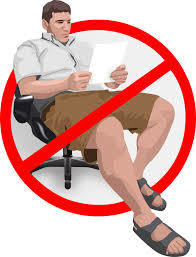
Performance & Competency Evaluation
- The volunteer’s performance and competence is assessed throughout the orientation process during observations and through administration of a quiz upon completion of training.
- Additionally, performance and competency is assessed on an ongoing basis
Volunteer Documentation
- *Centers for Medicare and Medicaid Services (CMMS) require this documentation to be completed within 48 hours
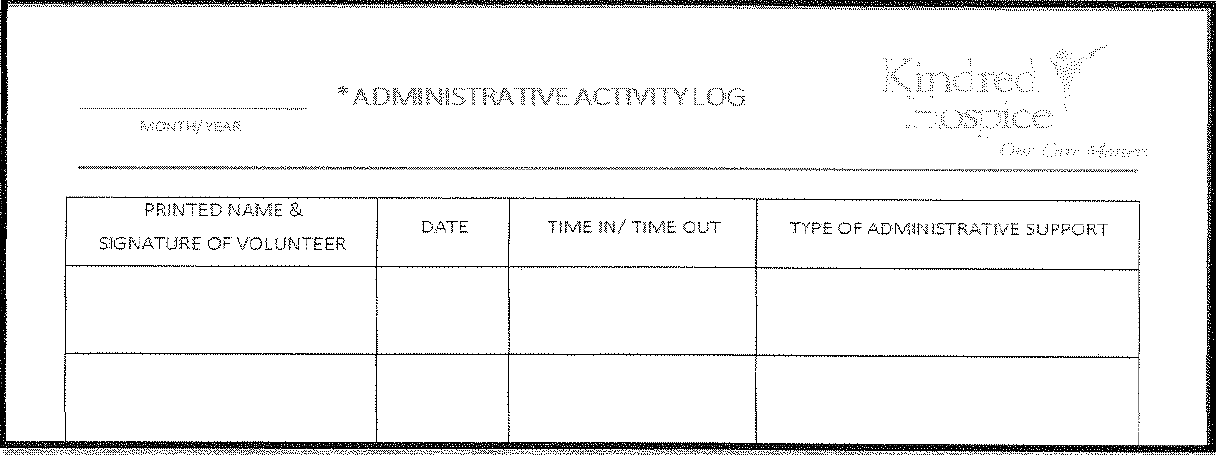
The Patient Support Volunteer
"The roles and responsibilities in patient support and care"

Volunteer Request
Plan of Care
Volunteer Intervention
Steps in Support Care

Volunteer Assignment
Plan of Care
Volunteer Assignment
- Type of request: caregiver relief, socialization, etc,
- Needs of patient: experiencing a burnout
- Frequency of services: often you go
- Identified problems reasons
- Identified goals outcome
- Interventions action
- Demographic information, Assigned interventions
- Needs of patient Visit frequency
- Don’t deviate from the Assignment
- Complete the volunteer note and submit to the manager of volunteer services within 48 hours
Limitations of the Volunteer Role
The Hospice Volunteer CANNOT...

- Provide hands-on care
- Administer medication
- Bring family or friends to patients home
- Serve as a legal witness for documents
- Provide transportation
- Accept or provide money
Reporting Patient Emergencies!
- Call hospice office
- Do NOT call 911
- Remain call and comfort
Call IMMEDIATELY If...
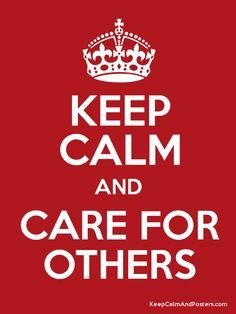
- Patient has uncontrolled pain
- [pateint] is injured
- Mental status has changed
- Actively dying
- There are concerns of questions
Reporting Concerns?
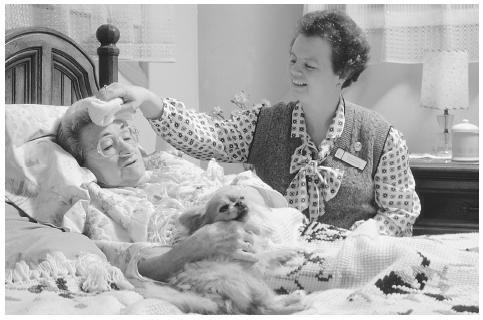
Post-mortem Care & Response:
Death is an anticipated outcome for hospice patients, it is important to remain calm and not panic if a patient dies during your visit.
Do not call 91, contact the local hospice program.
HIPAA & Confidentiality
"Legal methods with patient care information"

Ethics & Code of Conduct
"Accepted ethical practices and proper conductive behavior"

Patient & Family Bill of Rights
"The role of the Family in Hospice care in relation to the patient."

Advance Directives
Understanding Diseases & Conditions
"Common hospice related diseases and prognoses"

Standard Precautions & Infection Control
"Dealing with disease quarantine and hygienic precautions"

Psychosocial & Spiritual Considerations
"Psychological effects in hospice care with families and relationships"

Emergency Preparedness
"Staying alert of possible hazards and corresponding procedures."

Patient Abuse, Neglect, & Exploitation
"Procedures involving patient exploitation and necessary steps."

Veterans At End-of-Life
"Hospice services available to veterans who are eligible*"
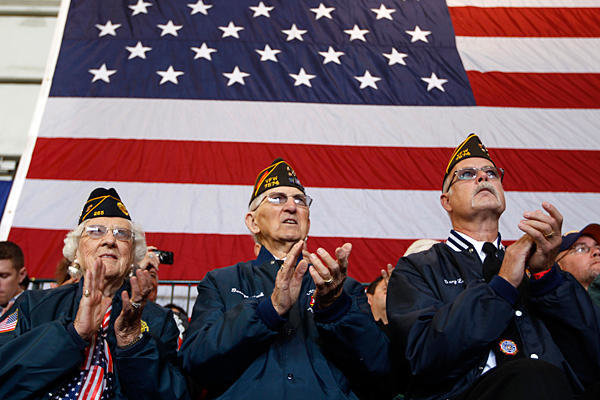
Death, Dying & Bereavement
"Handling the usage death and care with bereavement"

Self-care & Stress Management
"Dealing with stress and concern with the Self"
